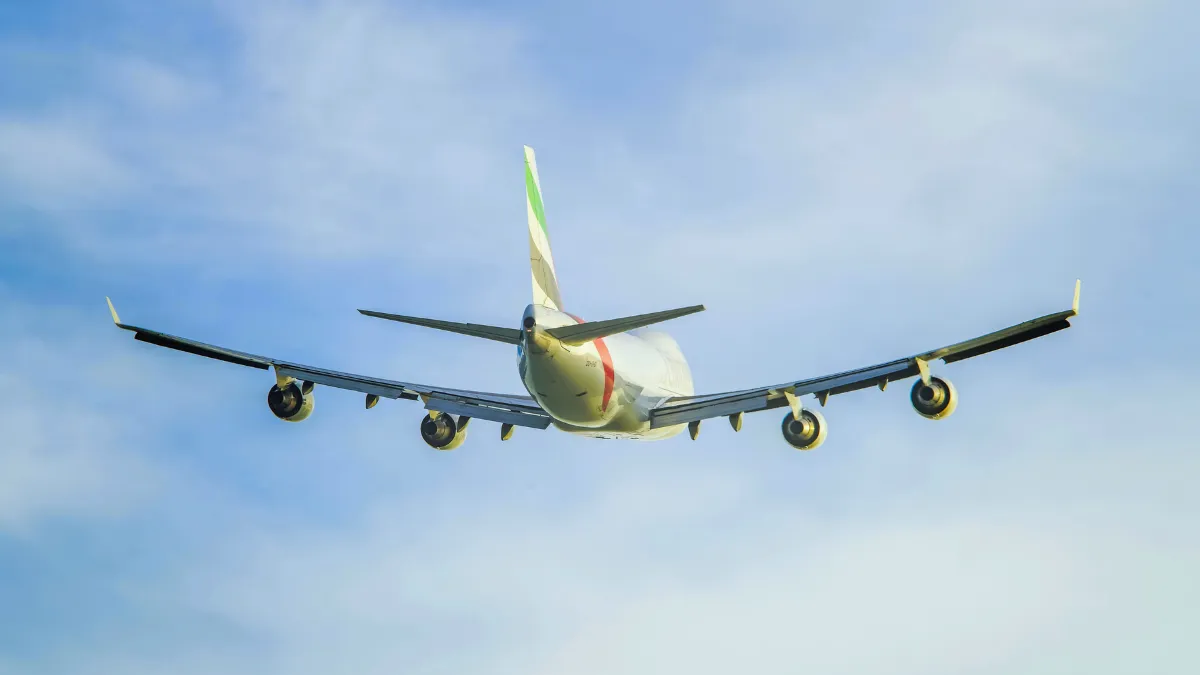DGCA Directs NMIA to Cease Animal Slaughter Amid Bird Strike Concerns
As the Navi Mumbai International Airport (NMIA) gears up for its grand inauguration in June 2025, the Directorate General of Civil Aviation (DGCA) has issued a critical directive to address a pressing safety concern.
The regulatory body has instructed the airport operator to immediately halt all activities, including illegal animal slaughter, that attract birds near the facility, particularly in the Ulwe area, just three kilometers from the runway. This decisive action aims to mitigate the risk of bird strikes, which pose a significant threat to aircraft safety during take-off and landing.
The DGCA’s directive follows persistent complaints from local environmental activists and residents who have raised alarms about unauthorized slaughtering of goats and chickens in Ulwe. These activities, occurring within a 10-kilometer radius of the airport, violate DGCA norms designed to maintain safe airspace.
The presence of food waste and animal carcasses has reportedly led to a surge in bird activity, including eagles and vultures, increasing the likelihood of collisions with aircraft. Such incidents can cause severe damage to planes and, in extreme cases, endanger passenger safety.
A Growing Concern for Aviation Safety
The issue first came to light when B N Kumar, director of the NatConnect Foundation, filed a complaint on February 24, 2025, through the Prime Minister’s Public Grievance Portal. Kumar highlighted the environmental and safety hazards posed by illegal slaughterhouses operating openly in Ulwe’s Sector 19, estimating that 15 to 30 goats are slaughtered daily.
Despite initial delays in response from the DGCA, the matter gained traction after protests from residents and activists on April 13, prompting swift action from the regulatory authority.
DGCA Director Amit Gupta confirmed the directive, stating that the aerodrome operator has been advised to take necessary steps to curb all bird-attracting activities. This includes enforcing stricter regulations against illegal slaughtering and ensuring proper waste disposal to deter birds.

The DGCA’s intervention aligns with its broader commitment to aviation safety, especially as NMIA prepares to ease congestion at Mumbai’s Chhatrapati Shivaji Maharaj International Airport.
Local Activists Demand Long-Term Solutions
Environmentalists and local residents have welcomed the DGCA’s directive but are calling for sustainable measures to address the root causes. Activists argue that the lack of regulated slaughterhouses in Navi Mumbai has fueled illegal operations, leading to unhygienic conditions and environmental hazards.
They propose the establishment of a modern, regulated slaughterhouse with strict hygiene standards to ensure food safety and reduce aviation risks.
Moreover, residents like Karan Chawla, who escalated the issue to the Chief Minister, have expressed concerns about public health risks, including potential outbreaks of bird flu or other diseases linked to improper waste disposal.
The matter has now reached senior officials, including Additional Chief Secretary (Home) Dr. I S Chahal and Urban Development Secretary Govind Raj, signaling a coordinated effort to resolve the issue.
The Broader Implications for Navi Mumbai Airport
The DGCA’s directive underscores the challenges of balancing urban development with aviation safety as Navi Mumbai prepares to welcome its new international airport.
Set to commence operations with 30 weekly flights, NMIA is a nationally significant project aimed at meeting the growing demand for air travel in the region. However, ensuring a safe operational environment is paramount, particularly in the airport’s early days.
Bird strikes are a well-documented hazard in aviation, with incidents reported at airports worldwide. In India, the Delhi High Court recently sought the DGCA’s response on a plea to close abattoirs near the Indira Gandhi International Airport, citing similar risks. The Navi Mumbai case highlights the need for proactive measures to prevent such incidents, especially in densely populated areas like Ulwe, where urban activities can conflict with airport operations.
Collaborative Efforts for a Safer Future
To address these challenges, the DGCA has emphasized the role of the Aerodrome Environment Management Committee (AEMC), established under state government regulations for NMIA. The committee is tasked with monitoring and mitigating environmental risks around the airport, including those posed by bird activity.
Also Read: Urgent Alert – Ulwe’s Rapid Boom Sparks Infrastructure Woes
Additionally, the City and Industrial Development Corporation (CIDCO) and other local authorities have been urged to enforce stricter regulations and improve waste management practices.
As NMIA approaches its operational launch, the DGCA’s directive serves as a reminder of the importance of collaboration between regulators, airport operators, and local communities. By addressing the issue of illegal slaughtering and its associated risks, authorities aim to create a safer and more efficient aviation hub that benefits both travelers and residents.
Looking Ahead
With the DGCA’s intervention, there is renewed hope for concrete action to safeguard NMIA’s airspace. Activists and residents remain cautiously optimistic, awaiting visible enforcement measures and long-term solutions like regulated slaughterhouses. As Navi Mumbai prepares to take flight, the focus on aviation safety will be critical to ensuring the airport’s success as a vital infrastructure project.
The DGCA’s proactive stance sets a precedent for other airports facing similar challenges, reinforcing the importance of environmental management in aviation. For now, all eyes are on NMIA as it navigates these hurdles to deliver a safe and seamless travel experience for millions.
Also Read: Urgent Crisis – NEET UG Paper Leak Sparks Outrage in India
Frequently Asked Questions (FAQs)
Why did the DGCA order a halt to animal slaughter near Navi Mumbai Airport?
The DGCA directed the cessation of animal slaughter in Ulwe to prevent bird strikes, as food waste and carcasses attract birds, posing a safety risk to aircraft. This aligns with regulations prohibiting such activities within 10 kilometers of an airport.
What are bird strikes, and why are they dangerous?
Bird strikes occur when birds collide with aircraft, often during take-off or landing. They can damage engines, windshields, or other critical components, potentially leading to accidents or emergency landings.
What actions are being taken to address the issue in Ulwe?
The DGCA has instructed the airport operator to stop bird-attracting activities, including illegal slaughtering. Local authorities are also being urged to enforce regulations and improve waste management.
How will the Navi Mumbai International Airport benefit the region?
NMIA is expected to ease congestion at Mumbai’s existing airport, accommodate growing air travel demand, and boost regional connectivity with modern infrastructure and efficient operations.
What long-term solutions have activists proposed?
Activists have suggested establishing a regulated slaughterhouse in Navi Mumbai with strict hygiene standards to prevent illegal operations, reduce bird activity, and ensure public health safety.

